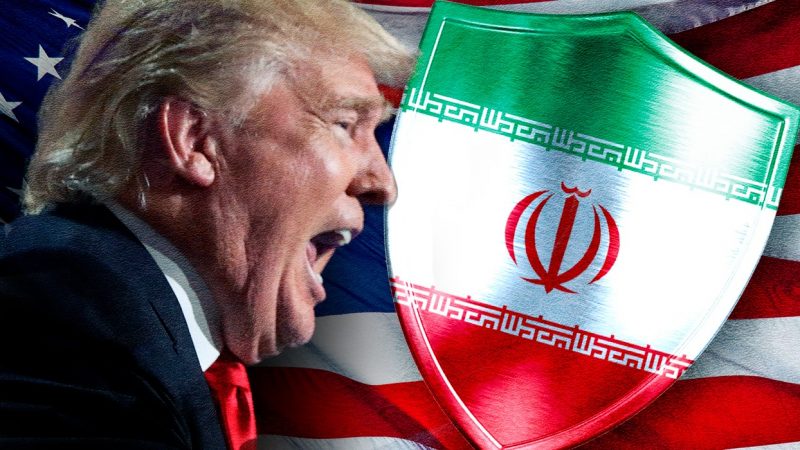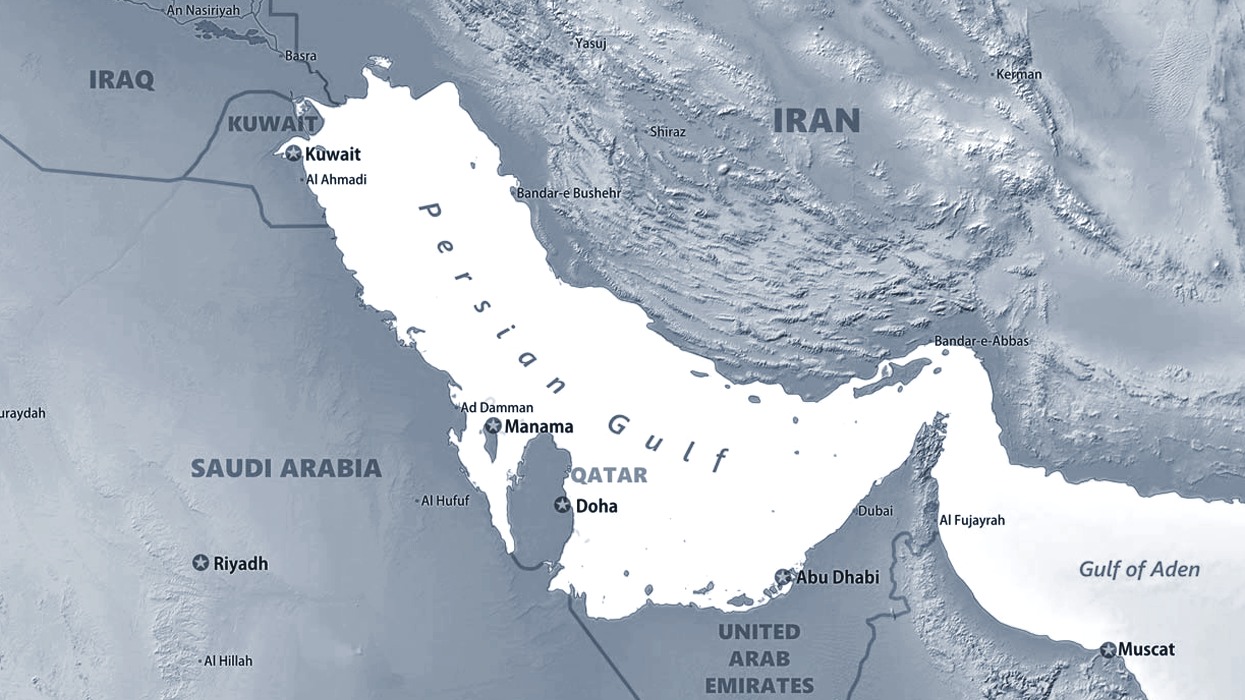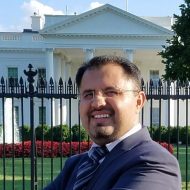07/19/2019
How Iran is fighting back against Trump’s “maximum pressure” campaign

On May 8, 2018, U.S. President Donald J. Trump announced his decision to end the US’ participation in the Joint Comprehensive Plan of Action (JCPOA) and begin reinstating nuclear-related sanctions against Iran. These extreme measures including the so-called “maximum pressure” policy and attempting to bring Iranian oil exports to “zero” have inflicted excruciating pain on the Islamic Republic. Tehran faces the most serious threat to its survival to date… in terms of scope and severity, it can only be compared to Iran’s eight-year war with Iraq in the 1980s.
Iran seems to be defying the US’ belligerent actions by adopting the following three strategies: the “Resistance Policy”, the “Escalate to De-escalate” approach and waging “limited war.”
ONE-RESISTANCE STRATEGY
The theocracy in Iran has adopted an approach of resistance to the Trump administration as it becomes more belligerent and hostile. In the context of this approach, Tehran prefers a policy of “Strategic Patience” until the upcoming 2020 US presidential elections and the likely victory of a Democratic nominee. Democrats have demanded that America return to this nuclear deal with Iran, and fought vehemently with Trump over his decision. The Islamic Republic hopes that someone like Democratic front-runner Joe Biden, who would stand a good chance against Trump according to recent polls, will come to office and bring the United States back into the JCPOA, allowing Tehran to benefit from the financial and diplomatic fruits of the deal once again.
The Supreme Leader of the Islamic Republic, as the theoretician of the resistance strategy, has repeatedly elaborated on its components, including the “neither war, nor negotiation” policy, autarky and placing emphasis on the local economy and domestic production. In explaining this strategy, other officials in the theocracy have pointed out that the country is going through a difficult situation as it is surrounded on all fronts by enemies (the US and its Gulf allies), encouraging people not to eat unaffordable food items, including meat and poultry, while other authorities have even gone as far as to ask the Iranian people to suffice to eat no more than one meal a day.
The resistance policy is not a new phenomenon, as the Islamic government in Iran has adopted similar policies to challenge the status quo and export the 1979 Islamic Revolution in the past.
Iranian Supreme Leader Khamenei coined the term “Resistance Economy” in 2012 as a strategy to find solutions in order to circumvent sanctions which had begun to take their toll. It seems this approach has not been successful enough to convince Tehran to keep pursuing its “Strategic Patience” until late 2020, and that the ailing Iranian economy might collapse if the “maximum pressure” campaign continues at its current pace and scope, unprecedented in the history of modern international relations and punitive economic actions.
The Islamic Republic will hardly be able to survive if its oil exports, their main economic lifeline, decline dramatically as the Trump administration is striving to accomplish.
TWO – FROM ESCALATION TO DE-ESCALATION
As mentioned above, the US’ maximum economic pressure policy and goal of “zero Iranian oil exports” has made it very difficult and even impossible for the leadership in Tehran to maintain their current preferred approach (the resistance strategy). Oil income and the flow of petrodollars to and from Iran are matters of survival. However, having recently acknowledged that it is no longer possible for them to export oil and its byproducts through official channels, Iran’s oil minister Bijan Zanganeh indicated that the situation is even worse than the period of the Iran-Iraq war in the 1980s because, according to him, during that period, Iran could at least still export oil and receive the petrodollars.
It seems that the U.S.’ maximum pressure policy has led to changes in the Iranian leaders’ approach and, according to some top military officials in Iran, the country has switched from the “Shiib Abu Talib” defensive stance to the “Badr and Khyber” aggressive stance.
Iran’s escalatory approach includes fueling tensions in the Gulf region and generating ambiguity in the global energy and stock markets. In this context, it seems that creating or threatening to create instability in the Persian Gulf, the Strait of Hormuz and the Oman Sea, alongside the conditions for psychological warfare and insecurity in order to increase global oil prices, stakes for the insurance companies covering oil tankers and transportation, are among the measures taken by Iran to adopt an escalation-based approach.

However, for obvious reasons, Iran is reluctant to fight a full-fledged war with the United States, and the goal of the escalation seems to be to increase the costs of instability for the United States and its allies in the Gulf region and then engage in talks with the United States while saving its face and dignity. Pursuing the “escalate to de-escalate” strategy is a well-known practice in the realm of international relations. This method was used during the Cold War between the former Soviet Union and the United States, and in many cases, it has provided a conducive platform for negotiations and compromises. For example, in at least two cases, the escalation and the rise of hostilities led to the de-escalation, détente and opening up for negotiations between the United States and the former Soviet Union. Regarding Iran, it seems that even though the government’s intention is to pursue the “escalate to de-escalate” strategy and then initiate negotiations, this strategy could go a different direction and, unintentionally, it could even ignite the flames of a war.
THREE-LIMITED WAR
Tehran’s third option to counter the Trump Administration’s “Maximum Pressure” campaign and efforts to reduce their oil exports is to wage a limited war. Of course, the main and senior decision-makers in both Tehran and Washington do not want a full-fledged war. No matter how much hawks like John Bolton and Mike Pompeo in the current US administration want a total confrontation with the Islamic Republic, the unpredictable consequences of such a war, including its implications for the current thriving US economy and the 2020 presidential elections, mean that President Trump definitely does not want this kind of confrontation with Iran. This was probably the main reason why, despite all pressures from his cabinet, Trump didn’t retaliate when the US’ Global Hawk drone was shot down by Iran’s IRGC forces.
Iran’s leaders do not want a war nor are capable of fighting the most powerful army on earth. Yet, if the resistance strategy fails (as it is now) and in the event the de-escalation and negotiation does not work and the avenues leading to the desired negotiations are blocked, then the Iranians may be inclined to confrontation. Whereas any possible war between Iran and the United States would be an asymmetric and unequal war, the ideal option for the Islamic Republic is to avoid a full-fledged confrontation but fight a limited war against US and allied targets. Meanwhile, the IRGC has a keen interest in launching such a limited war in the Gulf region for domestic propaganda purposes. The recent downing of the US drone can be viewed in this context.
There are many signs and indications that Iran has adopted a limited war strategy vis-à-vis the United States. At this stage, Iran may try to use its strategic military assets, meaning its ballistic missiles, to hit cities and American bases in the region. Iran’s missile threat is detrimental to the Gulf countries that lack strategic depth. Another Iranian tool is to use the suicide attacks by members of the Quds Force or its proxy forces, including the Houthis, to target US bases, and its regional allies in the Gulf and Sea of Oman.
The IRGC has the conviction that the United States is unwilling to fight, and, in particular, the current nationalist administration will not enter into a war with Iran for the sake of the interests of Arab countries and even Israel’s security. However, the IRGC ignores the fact that its preferred limited war strategy has the potential to escalate into a full-fledged war, especially if Iran decides to use its ballistic missiles to attack US military assets or Arab capitals in the Gulf, or if it decides to plant mines to make routes in the Strait of Hormuz unsafe for oil tankers.
In that case, in contradiction to its ostensible “America First” strategy, the current U.S. administration would not hesitate to enter into a full-fledged war with Iran, if only for the sake of reinstating the United States’ global prestige as the unchallenged sole superpower in the world since 1992.
https://uwidata.com/4372-how-iran-is-fighting-back-against-trumps-maximum-pressure-campaign/?fbclid=IwAR1M9cDGB5EQlTEHN5WGFuoVyTT_0kFCISrIufSlY_AGWrZiYggn_dCZQyM

No comments:
Post a Comment